Man-On Pun
VLMLight: Traffic Signal Control via Vision-Language Meta-Control and Dual-Branch Reasoning
May 26, 2025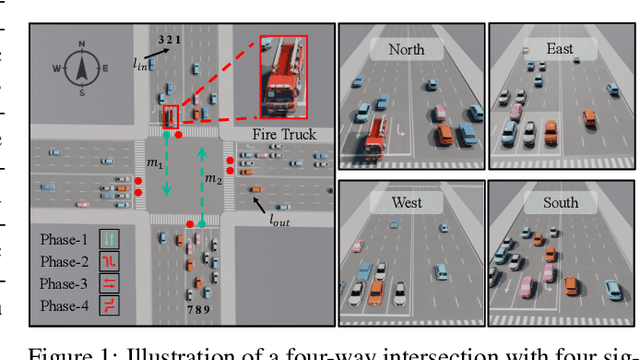
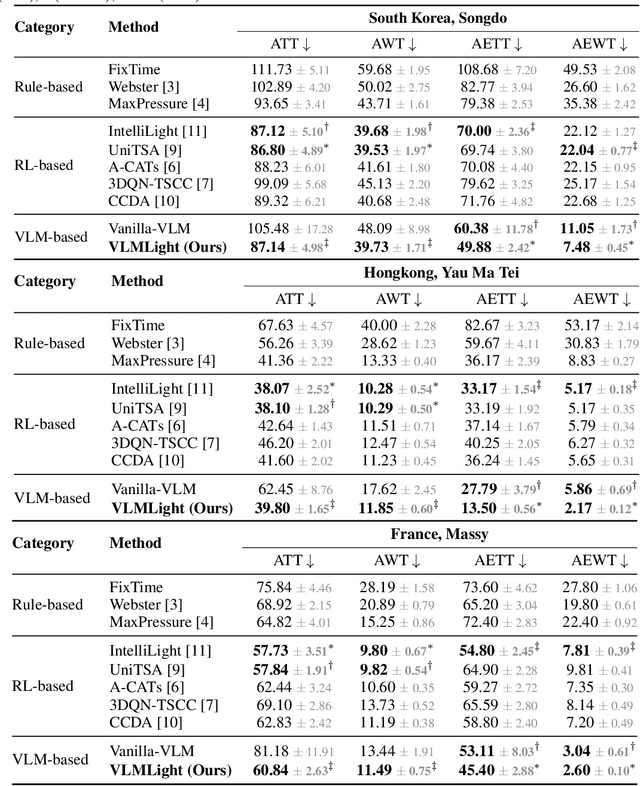
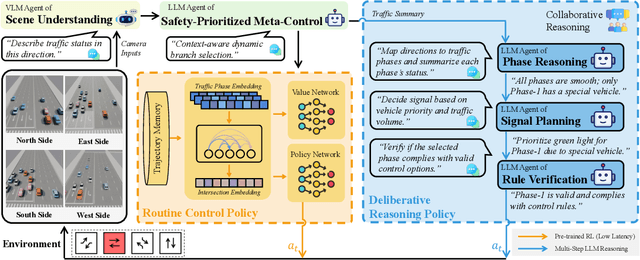

Abstract:Traffic signal control (TSC) is a core challenge in urban mobility, where real-time decisions must balance efficiency and safety. Existing methods - ranging from rule-based heuristics to reinforcement learning (RL) - often struggle to generalize to complex, dynamic, and safety-critical scenarios. We introduce VLMLight, a novel TSC framework that integrates vision-language meta-control with dual-branch reasoning. At the core of VLMLight is the first image-based traffic simulator that enables multi-view visual perception at intersections, allowing policies to reason over rich cues such as vehicle type, motion, and spatial density. A large language model (LLM) serves as a safety-prioritized meta-controller, selecting between a fast RL policy for routine traffic and a structured reasoning branch for critical cases. In the latter, multiple LLM agents collaborate to assess traffic phases, prioritize emergency vehicles, and verify rule compliance. Experiments show that VLMLight reduces waiting times for emergency vehicles by up to 65% over RL-only systems, while preserving real-time performance in standard conditions with less than 1% degradation. VLMLight offers a scalable, interpretable, and safety-aware solution for next-generation traffic signal control.
Kolmogorov-Arnold Network for Remote Sensing Image Semantic Segmentation
Jan 13, 2025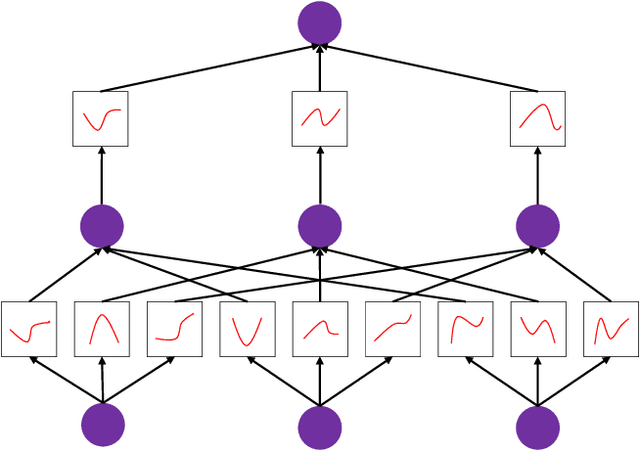


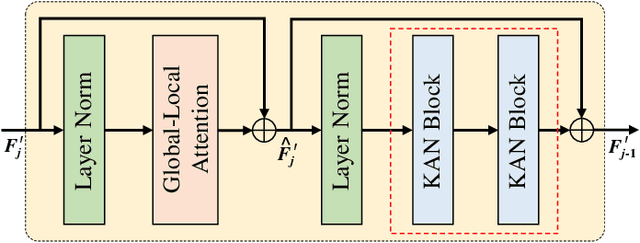
Abstract:Semantic segmentation plays a crucial role in remote sensing applications, where the accurate extraction and representation of features are essential for high-quality results. Despite the widespread use of encoder-decoder architectures, existing methods often struggle with fully utilizing the high-dimensional features extracted by the encoder and efficiently recovering detailed information during decoding. To address these problems, we propose a novel semantic segmentation network, namely DeepKANSeg, including two key innovations based on the emerging Kolmogorov Arnold Network (KAN). Notably, the advantage of KAN lies in its ability to decompose high-dimensional complex functions into univariate transformations, enabling efficient and flexible representation of intricate relationships in data. First, we introduce a KAN-based deep feature refinement module, namely DeepKAN to effectively capture complex spatial and rich semantic relationships from high-dimensional features. Second, we replace the traditional multi-layer perceptron (MLP) layers in the global-local combined decoder with KAN-based linear layers, namely GLKAN. This module enhances the decoder's ability to capture fine-grained details during decoding. To evaluate the effectiveness of the proposed method, experiments are conducted on two well-known fine-resolution remote sensing benchmark datasets, namely ISPRS Vaihingen and ISPRS Potsdam. The results demonstrate that the KAN-enhanced segmentation model achieves superior performance in terms of accuracy compared to state-of-the-art methods. They highlight the potential of KANs as a powerful alternative to traditional architectures in semantic segmentation tasks. Moreover, the explicit univariate decomposition provides improved interpretability, which is particularly beneficial for applications requiring explainable learning in remote sensing.
MANet: Fine-Tuning Segment Anything Model for Multimodal Remote Sensing Semantic Segmentation
Oct 15, 2024



Abstract:Multimodal remote sensing data, collected from a variety of sensors, provide a comprehensive and integrated perspective of the Earth's surface. By employing multimodal fusion techniques, semantic segmentation offers more detailed insights into geographic scenes compared to single-modality approaches. Building upon recent advancements in vision foundation models, particularly the Segment Anything Model (SAM), this study introduces a novel Multimodal Adapter-based Network (MANet) for multimodal remote sensing semantic segmentation. At the core of this approach is the development of a Multimodal Adapter (MMAdapter), which fine-tunes SAM's image encoder to effectively leverage the model's general knowledge for multimodal data. In addition, a pyramid-based Deep Fusion Module (DFM) is incorporated to further integrate high-level geographic features across multiple scales before decoding. This work not only introduces a novel network for multimodal fusion, but also demonstrates, for the first time, SAM's powerful generalization capabilities with Digital Surface Model (DSM) data. Experimental results on two well-established fine-resolution multimodal remote sensing datasets, ISPRS Vaihingen and ISPRS Potsdam, confirm that the proposed MANet significantly surpasses current models in the task of multimodal semantic segmentation. The source code for this work will be accessible at https://github.com/sstary/SSRS.
PPMamba: A Pyramid Pooling Local Auxiliary SSM-Based Model for Remote Sensing Image Semantic Segmentation
Sep 10, 2024
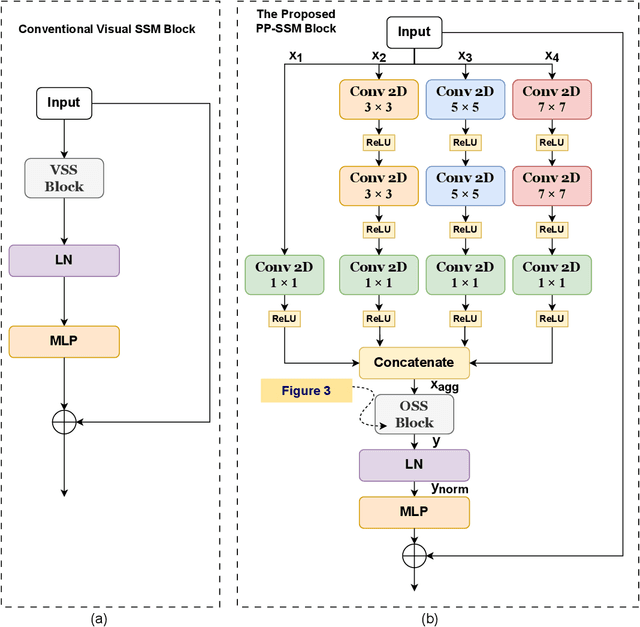

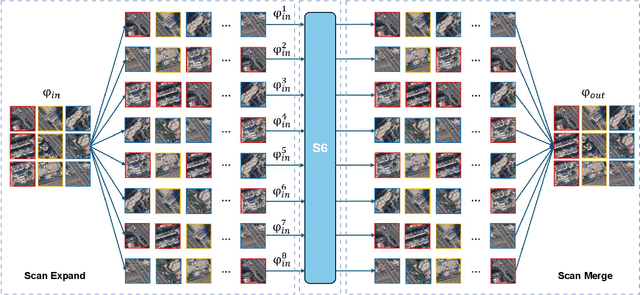
Abstract:Semantic segmentation is a vital task in the field of remote sensing (RS). However, conventional convolutional neural network (CNN) and transformer-based models face limitations in capturing long-range dependencies or are often computationally intensive. Recently, an advanced state space model (SSM), namely Mamba, was introduced, offering linear computational complexity while effectively establishing long-distance dependencies. Despite their advantages, Mamba-based methods encounter challenges in preserving local semantic information. To cope with these challenges, this paper proposes a novel network called Pyramid Pooling Mamba (PPMamba), which integrates CNN and Mamba for RS semantic segmentation tasks. The core structure of PPMamba, the Pyramid Pooling-State Space Model (PP-SSM) block, combines a local auxiliary mechanism with an omnidirectional state space model (OSS) that selectively scans feature maps from eight directions, capturing comprehensive feature information. Additionally, the auxiliary mechanism includes pyramid-shaped convolutional branches designed to extract features at multiple scales. Extensive experiments on two widely-used datasets, ISPRS Vaihingen and LoveDA Urban, demonstrate that PPMamba achieves competitive performance compared to state-of-the-art models.
iLLM-TSC: Integration reinforcement learning and large language model for traffic signal control policy improvement
Jul 08, 2024
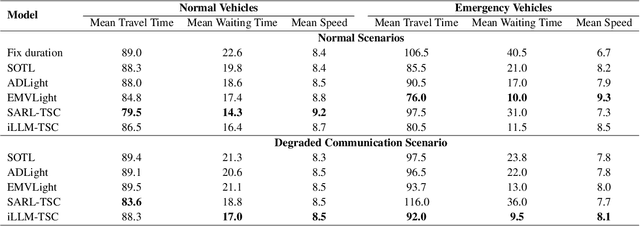
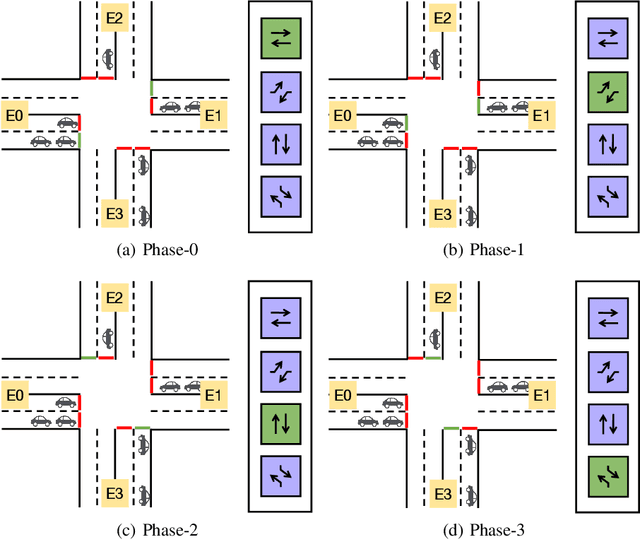

Abstract:Urban congestion remains a critical challenge, with traffic signal control (TSC) emerging as a potent solution. TSC is often modeled as a Markov Decision Process problem and then solved using reinforcement learning (RL), which has proven effective. However, the existing RL-based TSC system often overlooks imperfect observations caused by degraded communication, such as packet loss, delays, and noise, as well as rare real-life events not included in the reward function, such as unconsidered emergency vehicles. To address these limitations, we introduce a novel integration framework that combines a large language model (LLM) with RL. This framework is designed to manage overlooked elements in the reward function and gaps in state information, thereby enhancing the policies of RL agents. In our approach, RL initially makes decisions based on observed data. Subsequently, LLMs evaluate these decisions to verify their reasonableness. If a decision is found to be unreasonable, it is adjusted accordingly. Additionally, this integration approach can be seamlessly integrated with existing RL-based TSC systems without necessitating modifications. Extensive testing confirms that our approach reduces the average waiting time by $17.5\%$ in degraded communication conditions as compared to traditional RL methods, underscoring its potential to advance practical RL applications in intelligent transportation systems. The related code can be found at \url{https://github.com/Traffic-Alpha/iLLM-TSC}.
Frequency Decomposition-Driven Unsupervised Domain Adaptation for Remote Sensing Image Semantic Segmentation
Apr 06, 2024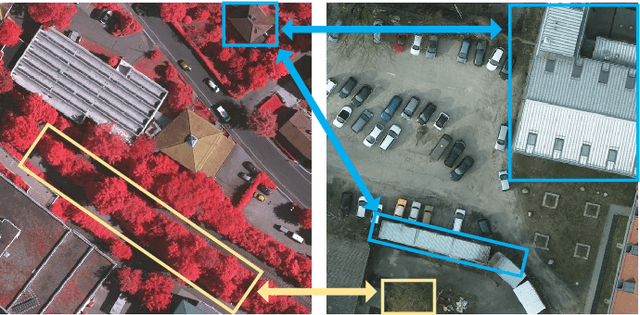
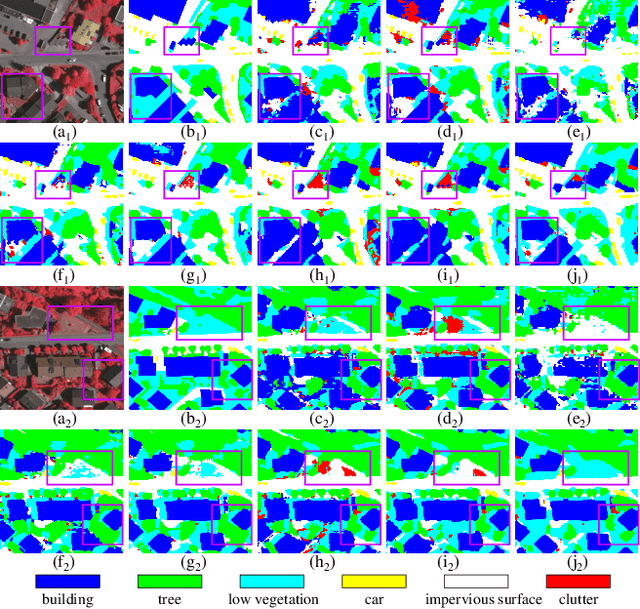
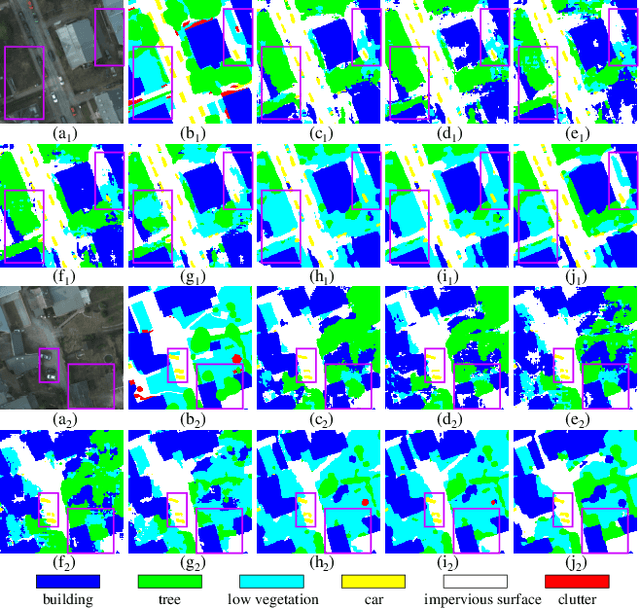
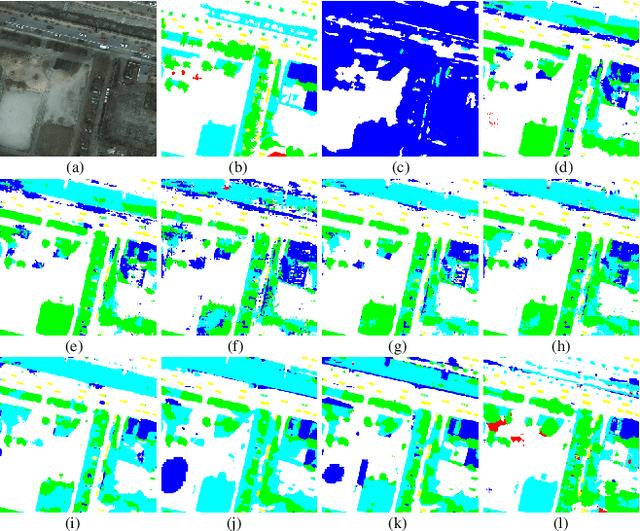
Abstract:Cross-domain semantic segmentation of remote sensing (RS) imagery based on unsupervised domain adaptation (UDA) techniques has significantly advanced deep-learning applications in the geosciences. Recently, with its ingenious and versatile architecture, the Transformer model has been successfully applied in RS-UDA tasks. However, existing UDA methods mainly focus on domain alignment in the high-level feature space. It is still challenging to retain cross-domain local spatial details and global contextual semantics simultaneously, which is crucial for the RS image semantic segmentation task. To address these problems, we propose novel high/low-frequency decomposition (HLFD) techniques to guide representation alignment in cross-domain semantic segmentation. Specifically, HLFD attempts to decompose the feature maps into high- and low-frequency components before performing the domain alignment in the corresponding subspaces. Secondly, to further facilitate the alignment of decomposed features, we propose a fully global-local generative adversarial network, namely GLGAN, to learn domain-invariant detailed and semantic features across domains by leveraging global-local transformer blocks (GLTBs). By integrating HLFD techniques and the GLGAN, a novel UDA framework called FD-GLGAN is developed to improve the cross-domain transferability and generalization capability of semantic segmentation models. Extensive experiments on two fine-resolution benchmark datasets, namely ISPRS Potsdam and ISPRS Vaihingen, highlight the effectiveness and superiority of the proposed approach as compared to the state-of-the-art UDA methods. The source code for this work will be accessible at https://github.com/sstary/SSRS.
RS3Mamba: Visual State Space Model for Remote Sensing Images Semantic Segmentation
Apr 03, 2024Abstract:Semantic segmentation of remote sensing images is a fundamental task in geoscience research. However, there are some significant shortcomings for the widely used convolutional neural networks (CNNs) and Transformers. The former is limited by its insufficient long-range modeling capabilities, while the latter is hampered by its computational complexity. Recently, a novel visual state space (VSS) model represented by Mamba has emerged, capable of modeling long-range relationships with linear computability. In this work, we propose a novel dual-branch network named remote sensing images semantic segmentation Mamba (RS3Mamba) to incorporate this innovative technology into remote sensing tasks. Specifically, RS3Mamba utilizes VSS blocks to construct an auxiliary branch, providing additional global information to convolution-based main branch. Moreover, considering the distinct characteristics of the two branches, we introduce a collaborative completion module (CCM) to enhance and fuse features from the dual-encoder. Experimental results on two widely used datasets, ISPRS Vaihingen and LoveDA Urban, demonstrate the effectiveness and potential of the proposed RS3Mamba. To the best of our knowledge, this is the first vision Mamba specifically designed for remote sensing images semantic segmentation. The source code will be made available at https://github.com/sstary/SSRS.
Adaptive Semantic-Enhanced Denoising Diffusion Probabilistic Model for Remote Sensing Image Super-Resolution
Mar 17, 2024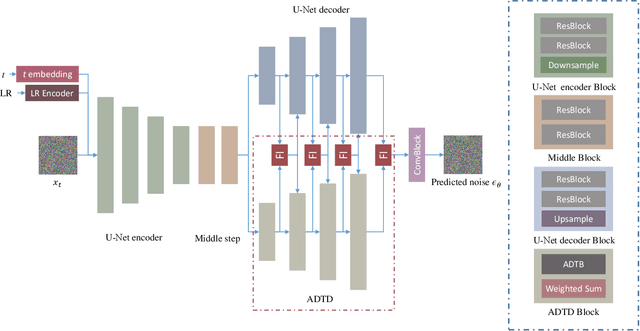
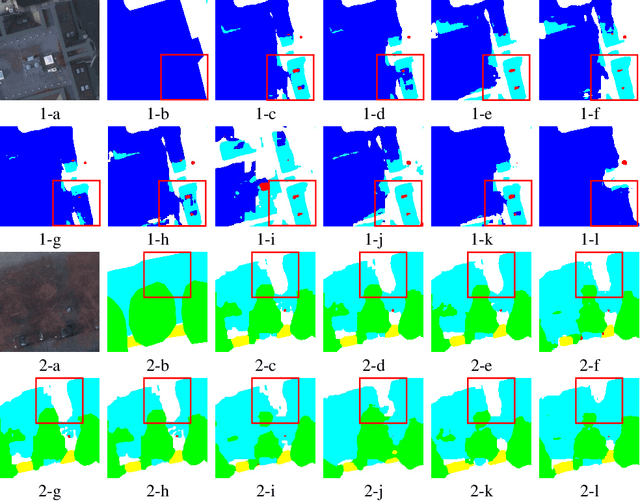
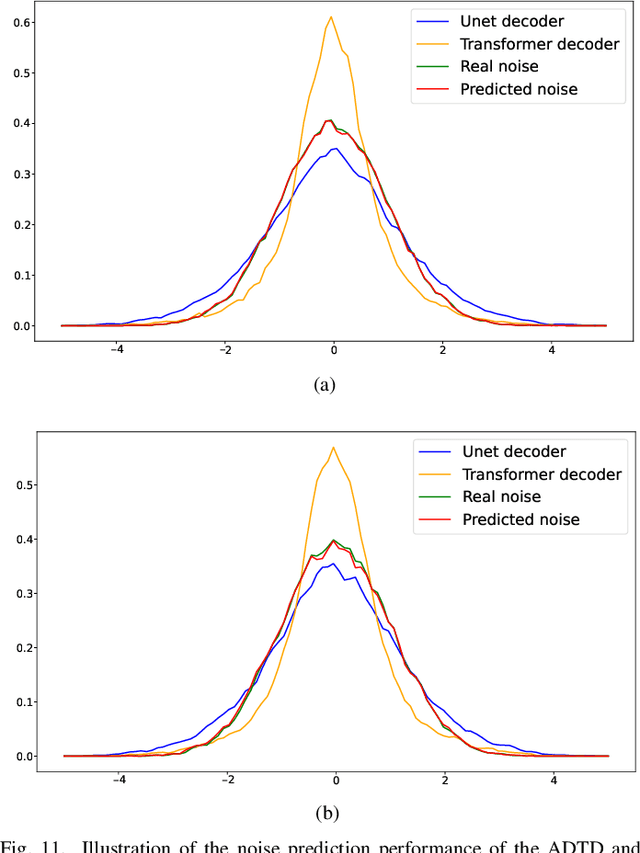
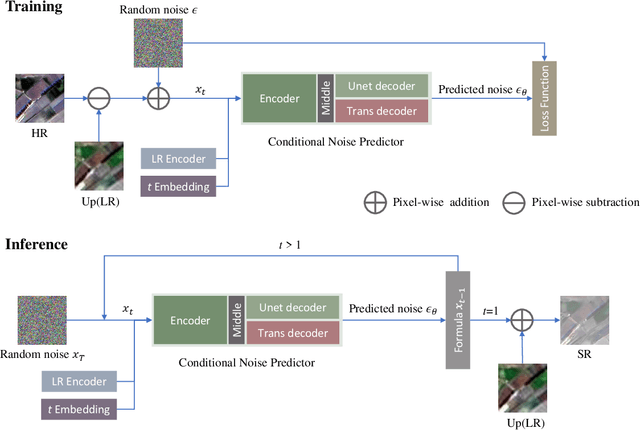
Abstract:Remote sensing image super-resolution (SR) is a crucial task to restore high-resolution (HR) images from low-resolution (LR) observations. Recently, the Denoising Diffusion Probabilistic Model (DDPM) has shown promising performance in image reconstructions by overcoming problems inherent in generative models, such as over-smoothing and mode collapse. However, the high-frequency details generated by DDPM often suffer from misalignment with HR images due to the model's tendency to overlook long-range semantic contexts. This is attributed to the widely used U-Net decoder in the conditional noise predictor, which tends to overemphasize local information, leading to the generation of noises with significant variances during the prediction process. To address these issues, an adaptive semantic-enhanced DDPM (ASDDPM) is proposed to enhance the detail-preserving capability of the DDPM by incorporating low-frequency semantic information provided by the Transformer. Specifically, a novel adaptive diffusion Transformer decoder (ADTD) is developed to bridge the semantic gap between the encoder and decoder through regulating the noise prediction with the global contextual relationships and long-range dependencies in the diffusion process. Additionally, a residual feature fusion strategy establishes information exchange between the two decoders at multiple levels. As a result, the predicted noise generated by our approach closely approximates that of the real noise distribution.Extensive experiments on two SR and two semantic segmentation datasets confirm the superior performance of the proposed ASDDPM in both SR and the subsequent downstream applications. The source code will be available at https://github.com/littlebeen/ASDDPM-Adaptive-Semantic-Enhanced-DDPM.
DF4LCZ: A SAM-Empowered Data Fusion Framework for Scene-Level Local Climate Zone Classification
Mar 14, 2024Abstract:Recent advancements in remote sensing (RS) technologies have shown their potential in accurately classifying local climate zones (LCZs). However, traditional scene-level methods using convolutional neural networks (CNNs) often struggle to integrate prior knowledge of ground objects effectively. Moreover, commonly utilized data sources like Sentinel-2 encounter difficulties in capturing detailed ground object information. To tackle these challenges, we propose a data fusion method that integrates ground object priors extracted from high-resolution Google imagery with Sentinel-2 multispectral imagery. The proposed method introduces a novel Dual-stream Fusion framework for LCZ classification (DF4LCZ), integrating instance-based location features from Google imagery with the scene-level spatial-spectral features extracted from Sentinel-2 imagery. The framework incorporates a Graph Convolutional Network (GCN) module empowered by the Segment Anything Model (SAM) to enhance feature extraction from Google imagery. Simultaneously, the framework employs a 3D-CNN architecture to learn the spectral-spatial features of Sentinel-2 imagery. Experiments are conducted on a multi-source remote sensing image dataset specifically designed for LCZ classification, validating the effectiveness of the proposed DF4LCZ. The related code and dataset are available at https://github.com/ctrlovefly/DF4LCZ.
LLM-Assisted Light: Leveraging Large Language Model Capabilities for Human-Mimetic Traffic Signal Control in Complex Urban Environments
Mar 13, 2024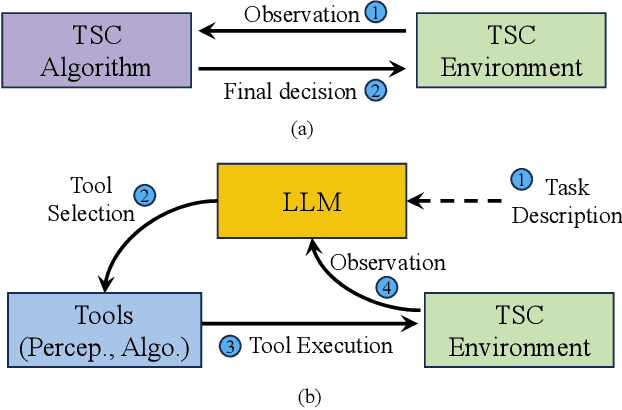
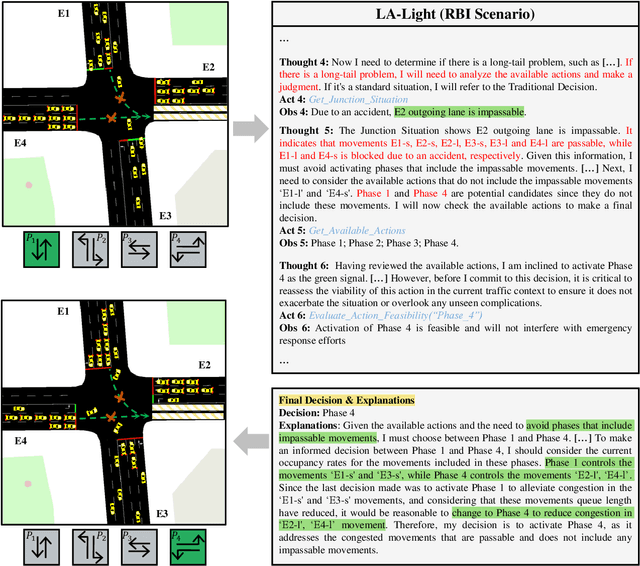

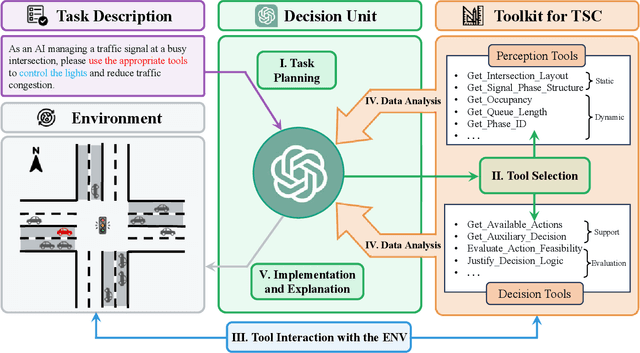
Abstract:Traffic congestion in metropolitan areas presents a formidable challenge with far-reaching economic, environmental, and societal ramifications. Therefore, effective congestion management is imperative, with traffic signal control (TSC) systems being pivotal in this endeavor. Conventional TSC systems, designed upon rule-based algorithms or reinforcement learning (RL), frequently exhibit deficiencies in managing the complexities and variabilities of urban traffic flows, constrained by their limited capacity for adaptation to unfamiliar scenarios. In response to these limitations, this work introduces an innovative approach that integrates Large Language Models (LLMs) into TSC, harnessing their advanced reasoning and decision-making faculties. Specifically, a hybrid framework that augments LLMs with a suite of perception and decision-making tools is proposed, facilitating the interrogation of both the static and dynamic traffic information. This design places the LLM at the center of the decision-making process, combining external traffic data with established TSC methods. Moreover, a simulation platform is developed to corroborate the efficacy of the proposed framework. The findings from our simulations attest to the system's adeptness in adjusting to a multiplicity of traffic environments without the need for additional training. Notably, in cases of Sensor Outage (SO), our approach surpasses conventional RL-based systems by reducing the average waiting time by $20.4\%$. This research signifies a notable advance in TSC strategies and paves the way for the integration of LLMs into real-world, dynamic scenarios, highlighting their potential to revolutionize traffic management. The related code is available at \href{https://github.com/Traffic-Alpha/LLM-Assisted-Light}{https://github.com/Traffic-Alpha/LLM-Assisted-Light}.
 Add to Chrome
Add to Chrome Add to Firefox
Add to Firefox Add to Edge
Add to Edge